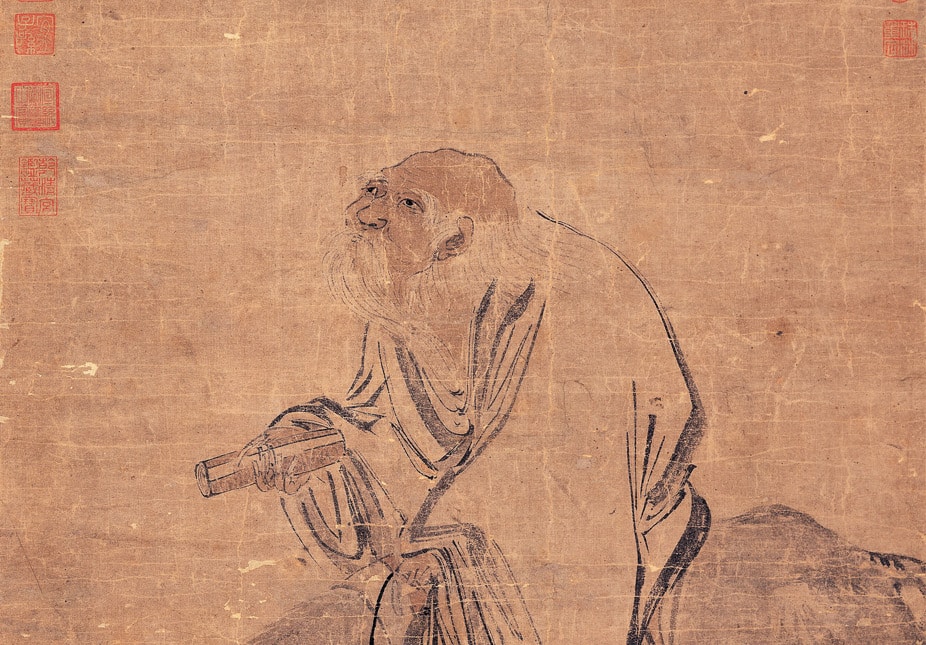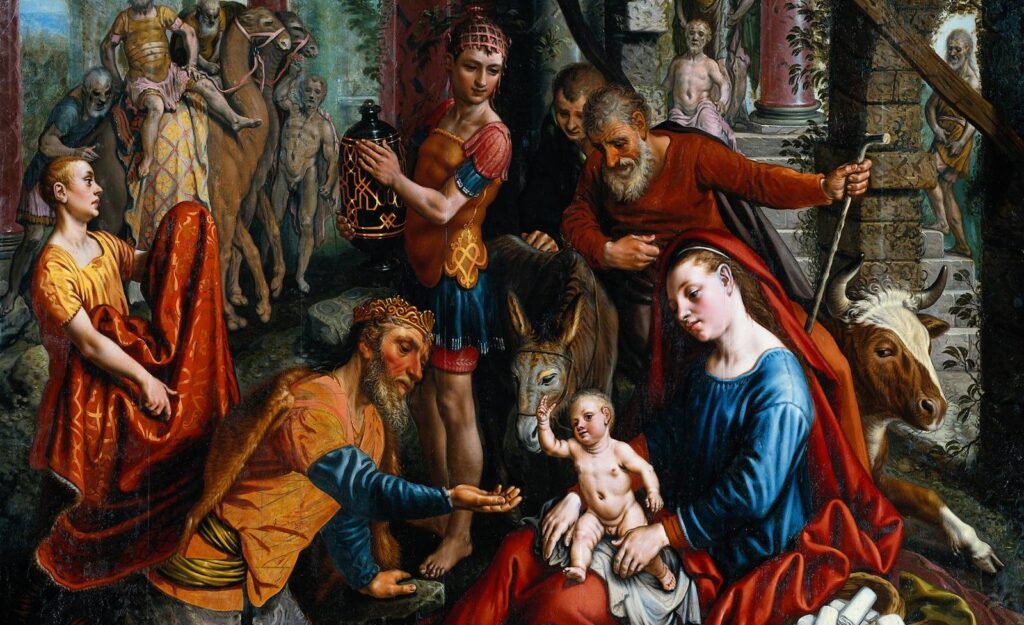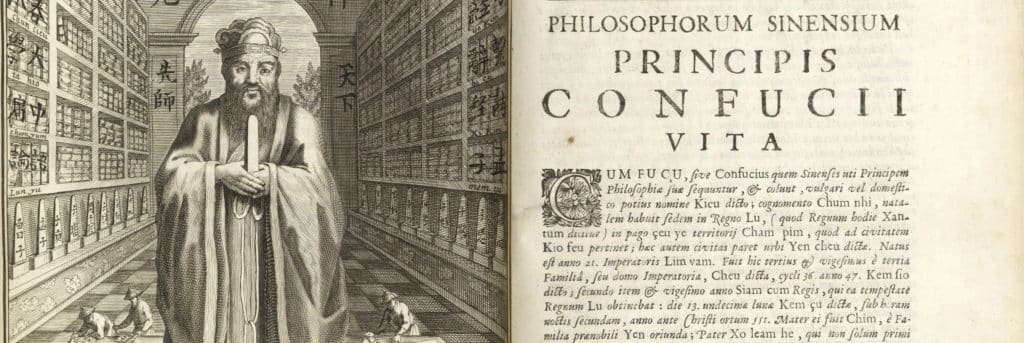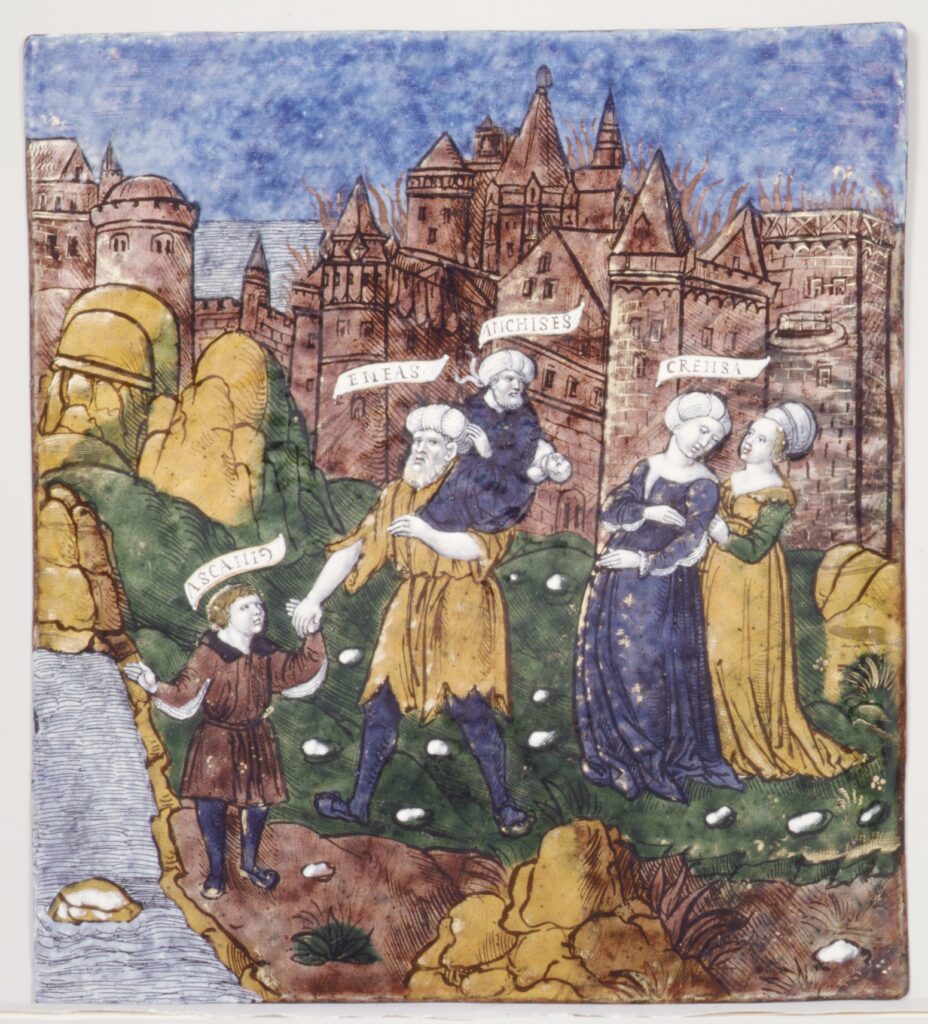
Classical Education Must Include the East
This is an Altum essay by guest author David Armstrong (MA Religious Studies; MA Classics). David teaches Latin and writes from St. Louis, Missouri.
“Classical” education beyond pedagogical philosophy and methodology typically means a.) something having to do with Greco-Roman classics, especially the classical languages of Greek and Latin, b.) something having to do with what is still sometimes called “Western Civ,” courses on Western Civilization (which may or may not be intended to carry a certain amount of ideological and political weight in student formation), and/or c.) something to do with Christianity, especially the classical Christianity of late antiquity and the middle ages as it formed in Europe. As I work in an institution that values all three, let me be clear: I teach full-time Latin, and have an MA in Classics, so I definitely support instruction in the classical languages and texts of Ancient Greece and Rome; I certainly think that without a strong knowledge of the so-called “great books” tradition, one can be at a serious disadvantage for understanding the social, historical, political, religious, philosophical, and cultural forces that have shaped the modern world; and certainly, one will be at an utter loss to interpret modernity and postmodernity in Europe and the Americas without some kind of knowledge of Christianity, especially as it developed in the later Roman Empire. If one intends that classical education serve catechetical purposes, too, retelling the story of Early Christianity and the formation of its liturgical and intellectual heritage is essential. Ideas are not all or even most of religion, and students will make their own decisions as they get older about what works for them and why. Part of that decision-making process will involve what does and does not compellingly make sense to them; and while they may well decide that Christianity does not make good sense to them, it minimally should not be because no one bothered to explain to them Christianity’s interior coherence and the quality of its historic attempts to explain that coherence externally in dialogue, especially with the Jewish and pagan quarters of their shared Mediterranean world. In all these ways, I support the ideas behind classical education as a content movement, while having some caveats about the ways those ideas can be weaponized for causes and tendencies I’m not a fan of (usually in political discourse, but also for encouraging a certain kind of dogmatism in religious thinking that hampers academic theology as a discipline).
Nevertheless, I am convinced that the atomized approach to classics and theology from the Western Civ model of classical education is flawed. On each of the points listed above, the model simply fails to effectively highlight a core truth of the Western tradition, which is that many of its most essential insights are derived from sustained engagement with the East, both Near (Asia Minor, the Levant, Northern Africa) and Far (Central and East Asia). And by not giving proper attention to this fact, classical education can rob its students of the opportunity to use their paideia to engage with the global and ecclesial futures, which are going to be much more Eastern than Western.
The first and most glaring problem with the Western Civ model of a classical education that prioritizes Greek and Latin is that it excludes the foundational biblical languages of Hebrew and Aramaic and the Christian theological language of Aramaic’s late form, Syriac. A great deal is inaccessible to the would-be student of scripture that cannot read the first two of these languages and to the would-be theologian that has no awareness of the third. In the first case, the student is dependent, knowingly or unknowingly, on translations for all access to Jewish Scripture: the Greek Septuagint, the Latin Vulgate, and their English versions. I do not cast aspersion on the sanctity these translations hold for the Greek Orthodox and Roman Catholic Churches, respectively; but I do disdain the mythical thinking that these translations provide a somehow more authentic version of the Hebrew Bible–what Jews call the Tanakh and Christians call the Old Testament, generally–than does the Hebrew Masoretic Text used in the synagogue. That attitude was antisemitic when it was first coined, and it remains a theological power play against Judaism today; contemporary Christians should have nothing to do with it. The Masoretic Text, together with other surviving Hebrew texts like the biblical books among the Dead Sea Scrolls, the Samaritan Pentateuch, and the Greek Septuagint all constitute a constellation of witnesses to the earlier Hebrew literary culture that the Bible descends the isolation of any one of which at the expense of the others obscures. Similarly, Greek and Latin classics are their own literary tradition, fair enough; but Greek and Latin patristics must be balanced by the writings of the Syriac-speaking churches, which for most of late antiquity and the middle ages could be fairly argued to have far outclassed the churches of the Roman Empire in size and significance. Other relevant languages, like Coptic, Armenian, Georgian, and Ge’ez, also contribute some essential insights into the nature of classical Christianity. Greek and Latin are no pushover languages: mastery in either one takes a very long time to get and a longer time to maintain and deepen, so the claim for their priority cannot logically rest on the idea that they are much more accessible to students than are the named Near Eastern tongues (after all, Coptic children once did, and still do, learn Coptic script, etc.). Knowledge of Greco-Roman roots in English or the Romance Languages is not enough to teach someone Greek or Latin. The claim for priority can therefore only rest on the faulty concept that these languages enjoy a kind of supremacy or ontological priority over other ancient tongues arguably more relevant to the literature and history classical education is concerned with. Sure: time is limited, and Greek and Latin are accomplishments on their own. I don’t want less Greek and Latin: I want more philology for students, who are more capable than we give them credit for when it comes to languages, even seemingly difficult or exotic languages significant to history.
Speaking of that history, the cultural evolution of the Mediterranean is unintelligible without understanding not only Near Eastern languages but also the cultures, history, and politics of Africa and Asia. The entirety of the history of Ancient Israel, Judah, and Early Jews was conditioned by the wars of imperial superpowers in this region. In the Bronze Age, competition between Hittites in Asia Minor and Egypt, left Syria-Palestine open to invasion by the Sea Peoples and resettling by new people groups in the Canaanite highlands and Judean steppe, including the Proto-Israelites. This is roughly the same period in which Homer’s Iliad and Odyssey are set, cast as an epoch-changing battle between emergent Greek dynasties and the Hittite city-state of Wilusa (Ilion or Troy). Israel and Judah, when they formed as monarchic polities in the tenth, ninth, and eight centuries BCE—when “Homer” (if a Homer there was, which most classicists doubt) wrote his epics, many centuries after the events he depicts—continued to be shaped by the competition between Egypt and Mesopotamia (Assyria and Babylon, specifically) for control of Syria-Palestine and therefore executive power over the all-important trade routes that run through it. When the Achaemenids rose to power in what is now Iran, they assumed already extant practices in the administration of the Near East, including the use of Aramaic, religious toleration, activation of indigenous leadership, ancient routes of trade and communication, and more. It is this history which we glimpse through the canvas of biblical literature, curated for the politics and theologies of competing schools of Israelite and Judean scribes. All of this happened long before the Persian Wars with Greece inaugurated the Classical era in Athens and the flurry of Attic literature that students of Ancient Greek often cut their teeth on, and indeed, the attitude of the Greeks to this history is wildly different to that of the Bible: where the Persian king is a would-be tyrant of Greece, he is literally God’s messiah in the Bible (Isa 45:1).
When Alexander fought his campaigns to conquer the Achaemenid Empire from 336-323 BCE, principally against Darius III, he assumed Near Eastern styles of sacral kingship that had long since become defunct in Greece. He was crowned both Egyptian pharaoh and Persian emperor, both traditionally considered divine human beings, and demanded proskynesis, “prostration,” the normal act of subservience to the emperor, and divine honors while still alive. To his new Near Eastern subjects, this was routine; to his Greek subjects, these requests seemed outrageously barbarian. After his death in Babylon, however, his adoption of this style of kingship would be carried forward by the Diadochoi, his “successors,” their heirs, and much later on the Roman emperors, all of whom would claim some degree of divine humanity in connection to their royal rule. These ideas from surrounding cultures about divine kings also feature in biblical and related literature, which would become resources for the New Testament writers’ attempt to cast Jesus of Nazareth as a divine messiah of Israel and true lord of the world.
From the first century BCE onwards, Rome’s great threat was Persia. The Parthian and Sasanian successors to the Achaemenids periodically invaded Roman territory, and the Romans often responded in kind; neither side ever successfully defeated or conquered the other permanently. For the Roman emperors, the model for their aspirational designs on Persia was Alexander; for the Persians, their models of westward expansion were great kings like Cyrus, Xerxes, and Darius. Both Romans and Persians spoke as though world conquest were their destiny, divinely appointed in order to bring the world order to its appointed denouement. Intellectuals in both empires were more interested in the opportunities of cultural exchange. Plotinus, after all, wanted to go East, to Persia and possibly India, to learn from the wisdom schools there. The Gospel of Matthew records a story of Persian magi traveling to the Roman client kingdom of Judea to prostrate before the infant Jesus (Matt 2:1-12)—a tale, minimally, of the West’s importance to the minds of Eastern intellectuals like the Persian astrologer-priests. Both empires would ultimately fall, one quickly (Persia) and one slowly (Rome), to the rise of Islam in the seventh and eight centuries CE. Beginning as a pan-Abrahamic prophetic community on the margins of both empires, the Islamic umma adapted imperial eschatologies of global conquest from both sides for their own self-understanding, and quickly swept across the Near East and Central Asia with amazing force. The Eastern Roman Empire never recovered from the losses sustained by this advance.
Neither did the Syriac-speaking Christian community that flourished from Mesopotamia, on the Near Eastern borders of the Roman Empire, as far East as India, Sri Lanka, China, Tibet, and Mongolia. Long tolerated and enabled by Persian imperial authorities as one among many acceptable cults in the empire, Syriac-speaking Christians produced liturgical cultures and theological traditions far beyond the purview of Roman ecclesiastical authorities and boasted far greater numbers of Christians in their far-flung metropolitanates than the Byzantine Pentarchy could claim in Rome, Constantinople, Antioch, Jerusalem, and Alexandria. Islam’s conquest was often welcomed by Eastern Christians who were disaffiliated for various reasons, some political, some theological, from imperial Christianity, especially the often pejoratively named Nestorians and Jacobites. With Muslim rule came an autonomy that was difficult to secure under Byzantine rule for Christians deemed dissident by the empire. Many of the later church councils—Constantinople II, III, and Nicaea II—were shaped by these events. The rise of the Carolingian dynasty in Europe, the so-called “Holy Roman Empire,” was also precipitated in part by resistance to the advance of Islam into Europe and the papacy’s increasing isolation from a fractured Christian East. We in Europe and the United States largely tell the story of Christianity through the lens of what was for most of its important history a relatively minor and marginal Christian tradition; we present the theological development of that marginal tradition as though it was inevitable or fated when, in fact, it might well have been quite other than it now is.
Can a classical education form a program around these languages, this history, and this Christian pluralism while still being catechetically motivated? I hold out hope that the answer is yes in some form, but I acknowledge that the overextension of modern education and its demands means that probably the realistic answer is no. Yet I am not satisfied with this no: there are compelling reasons to rethink the design so that the answer might be instead at least a partial yes. To wit:
Classical education is not just about communicating a past, but also, like all education, about preparing students for the present and the future. And this also justifies turning our attention to the East. The geopolitical theater of greatest significance in this century, as both sides of the aisle agree, is going to be the Asian Pacific; whether the United States waxes or wanes in the international community, the future of the world is going to be decided in the Pacific and Indian Oceans and the South China Sea, in the Indian subcontinent, the Himalayas, the Tibetan plateau, and the Chinese mainland, in the Korean peninsula, the East Sea, and the Japanese archipelago. The Western power that is poised to stand tallest in that context is the nearby Australia, not the United States or the United Kingdom, the current and previous Western superpowers. The defining war of this generation may well be over control of Taiwan, not the freedom of Ukraine. The economic weight of the world is also shifting that direction currently. Those countries that in premodernity were the headwaters of the Silk Roads are once again becoming demographic and economic powerhouses in the modern world. Western powers may attempt to keep up through recovering industries and manufacturing exported to these places, but the economic significance of the new global population center is undeniable.
Christians also have more reason to be invested in Asia than in Europe as Christians. Christianity’s most significant growth this century has been in the Global South—South America, Africa, and Asia—and those places are where it seems poised to continue to grow. As Lambeth 2022 demonstrated, for instance, the old centers of power in the Christian world are losing their influence over Globally Southern communities; the early reports of Rome’s forthcoming Synod on Synodality similarly suggest that the Catholic future is indigenous, Hispanic, African, and Asian, not white and European. Many classical schools already offer Spanish and French in recognition of the fact that by the end of the century English is going to have to share room with Spanish as an official language in the United States. Linguae francae come and go, as Aramaic, Greek, and Latin all attest; this is normal. But if our goal is to amass the witness of the past in the service of our students for the global and Christian futures, we do them a disservice by not connecting them with the fact that “Western Civilization” has always been enchanted, engaged with, and challenged by the East. The strange thing about the Asian turn this century is not the turn itself but that the global priority briefly shifted elsewhere for a few centuries. European and American hegemony has always been a historical oddity, and the chauvinism that hegemony has encouraged has always been comical given the historical weight carried by the East. Occidentalism and Orientalism, cultural or theological, are alike expressions of discomfort with the West’s marginal origins and seeming future.
Classical education at its best will remain competitive for student futures and souls by reconnecting with the importance of the East in all its specificity and complexity for the West. The future of our world and of Christianity is not to be found in an idealized and isolated concept of the West, but in a revitalized connection between East and West, Global North and South, for which a methodologically classical paideia can indeed be an ideal preparation.
Header image: detail from “Laozi Riding an Ox” by Zhang Lu (张路), Ming dynasty (1368–1644), hanging scroll, light color on paper (39.9 by 21.7 in).
Note: Guest bloggers share their own thoughts as classical educators and learners and do not represent ClassicalU.com or Classical Academic Press. If you are interested in writing guest blog content, please contact us with your name, connection to classical education, and ideas for a blog post.








Responses